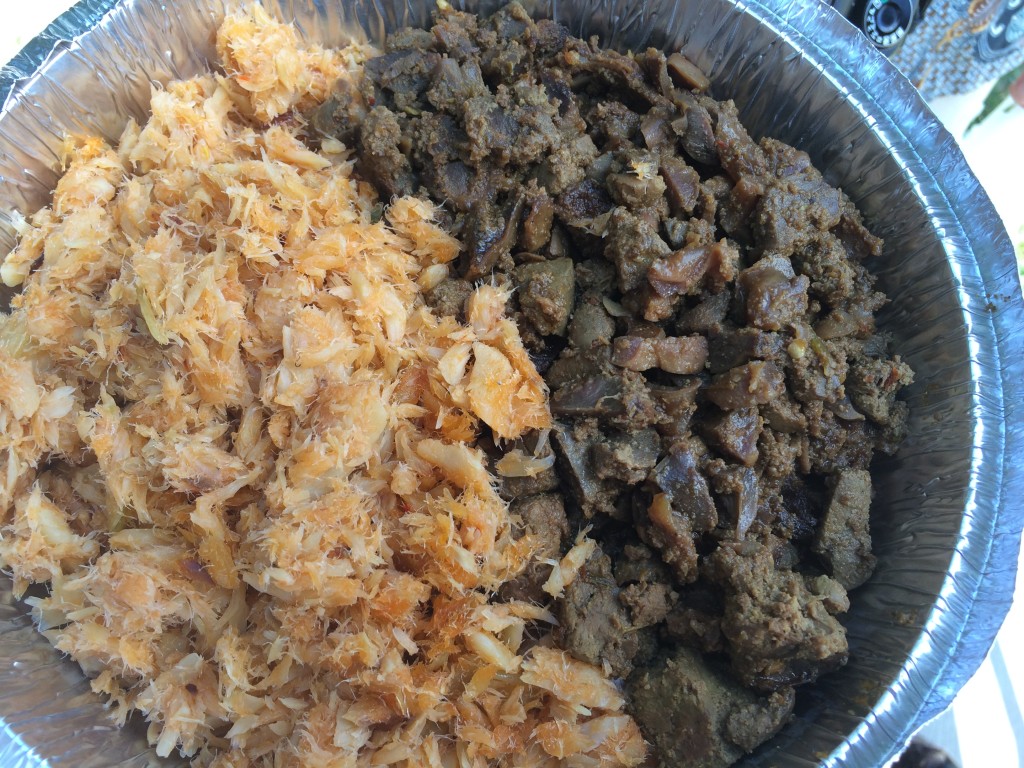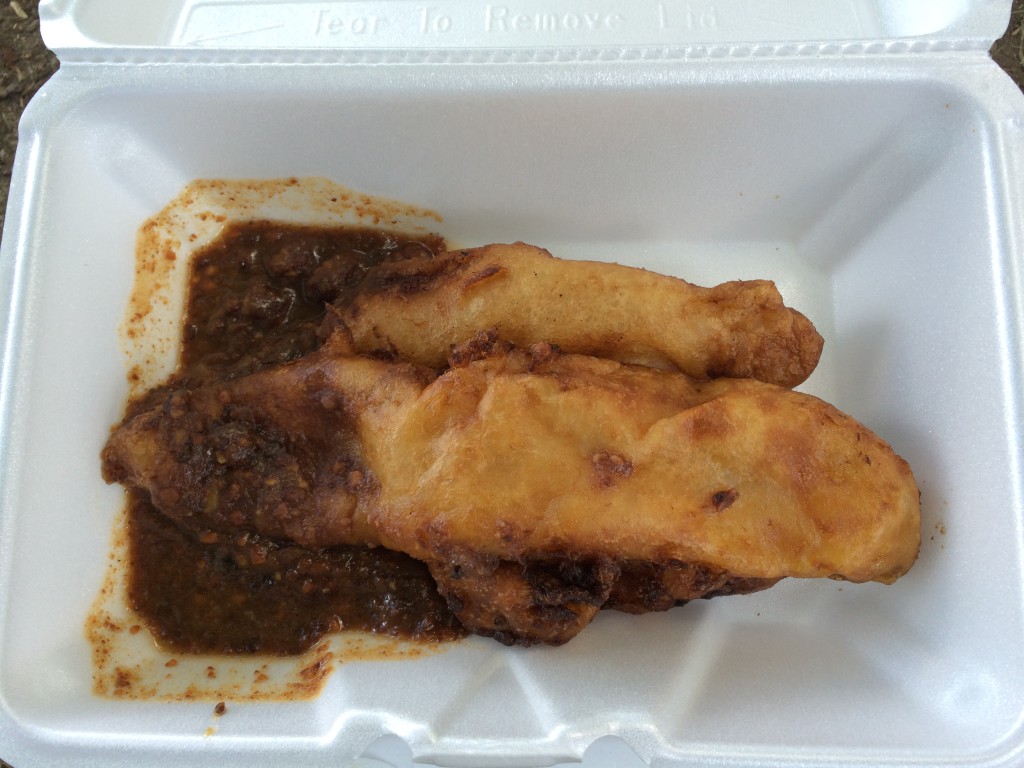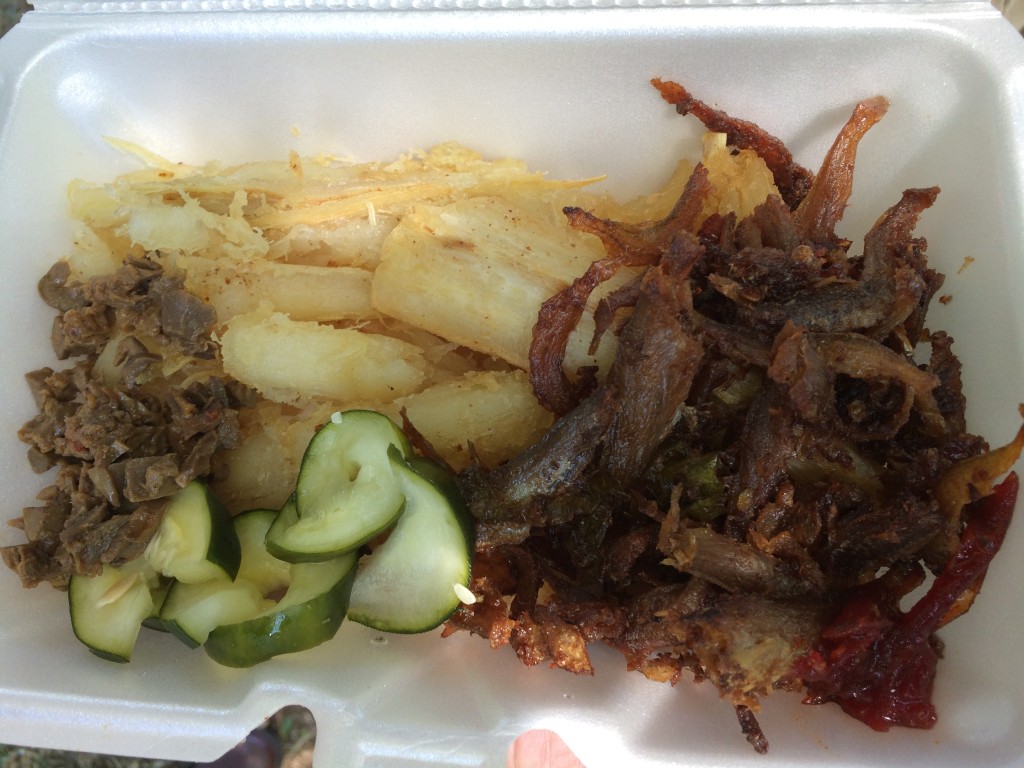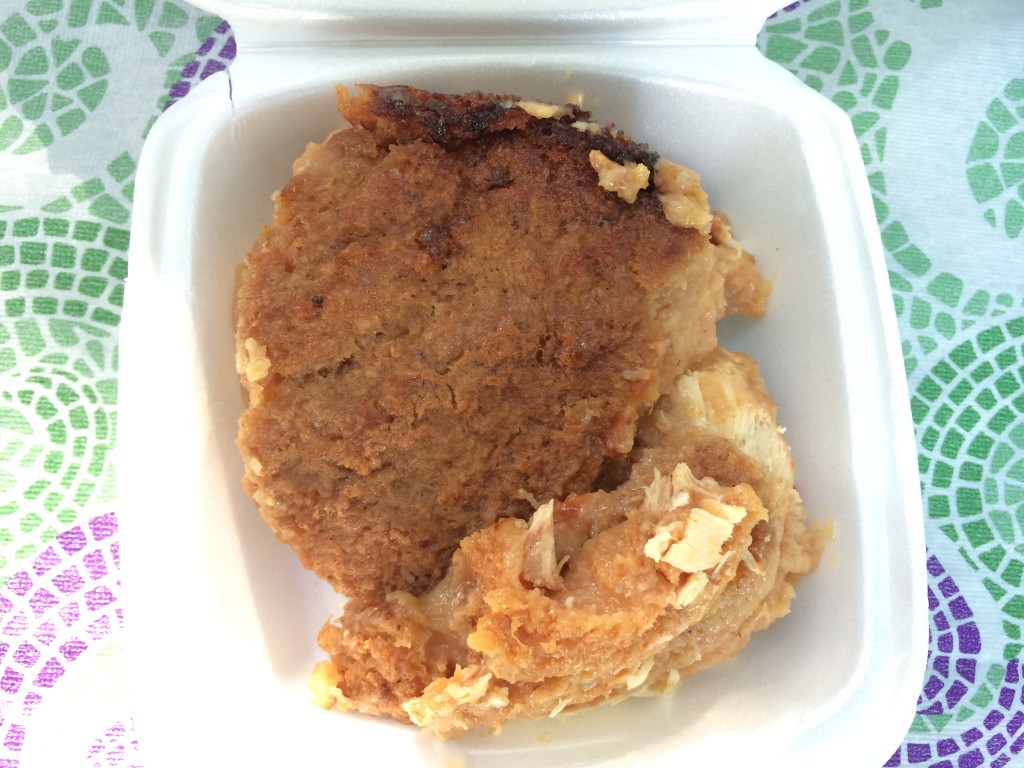Occupying a tiny corner of northeast South America, Suriname was settled by the British but taken over by the Dutch (it’s the official language) in the 17th century. Demographically diverse, its cuisine embraces influences from indigenous peoples, East Indians, West Africans, Javanese, Chinese, Brazilians, Portuguese, and Jews, not to mention the Dutch; and since for all intents and purposes it is culturally Caribbean, you can expect a serious geographical culinary contribution as well.
I know of only one Surinamese restaurant in NYC and that’s PNK Surinamese Cuisine located at 128-12 Liberty Ave in South Richmond Hill. Here’s what we ordered on a weekday visit; more options are available on weekends.
(Click on any image to view it in high resolution.)

For starters, six appetizers – clockwise from upper left:
• Bitterbal: Crispy outside with a yielding center.
• Kippen Worst: Chicken sausage. Kip is Dutch for chicken, the most common meat found here.
• Bakabana: Baked ripe plantain – short for Baka Babana. Sate (grilled kabob) sharing the spotlight.
• Loempia: Fried chicken and vegetable roll.
• Kroket: Chicken & potato croquette.
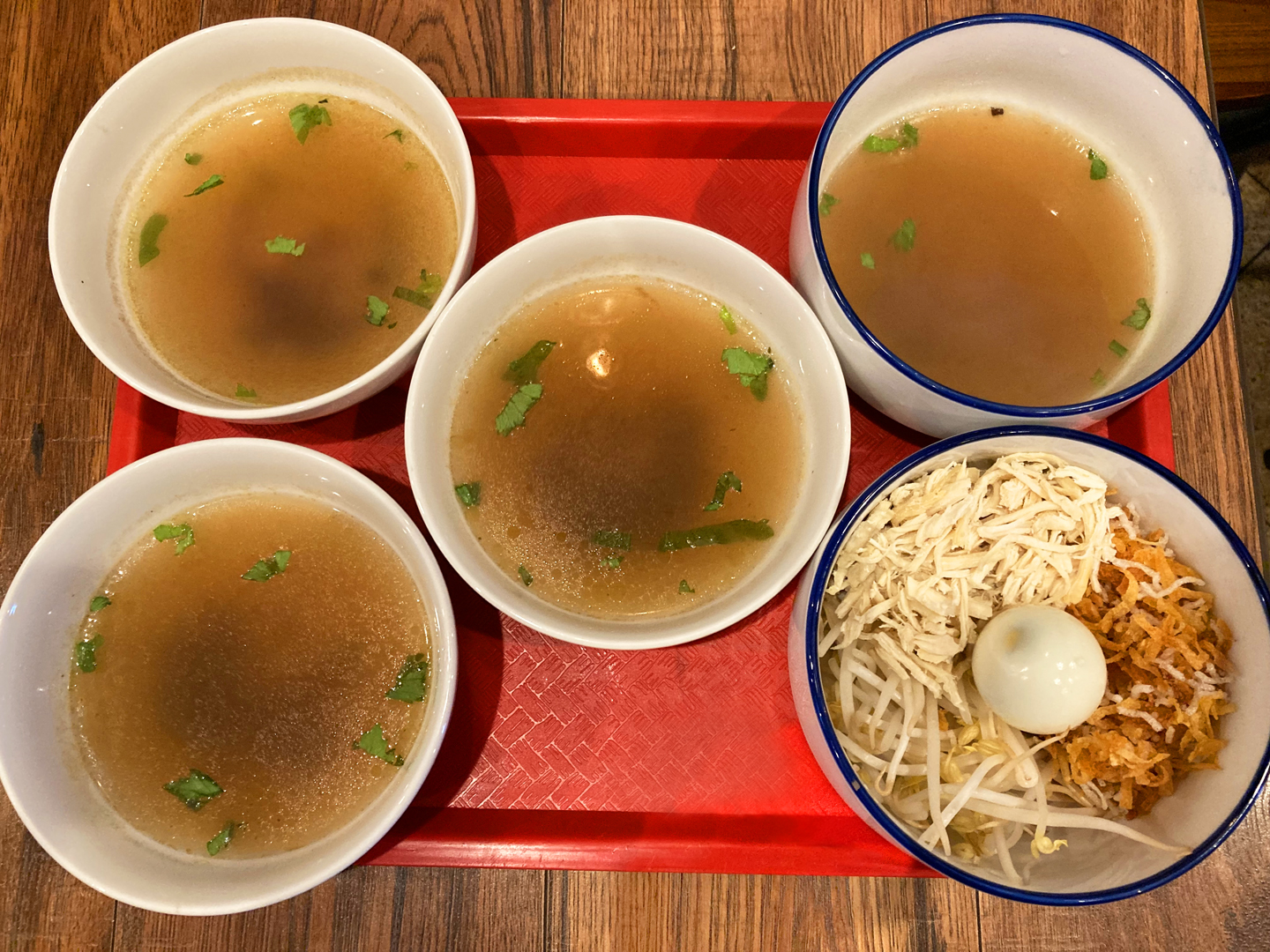
Saoto (soup) with add ins: bean sprouts, shredded chicken, crispy fried vermicelli, boiled egg.
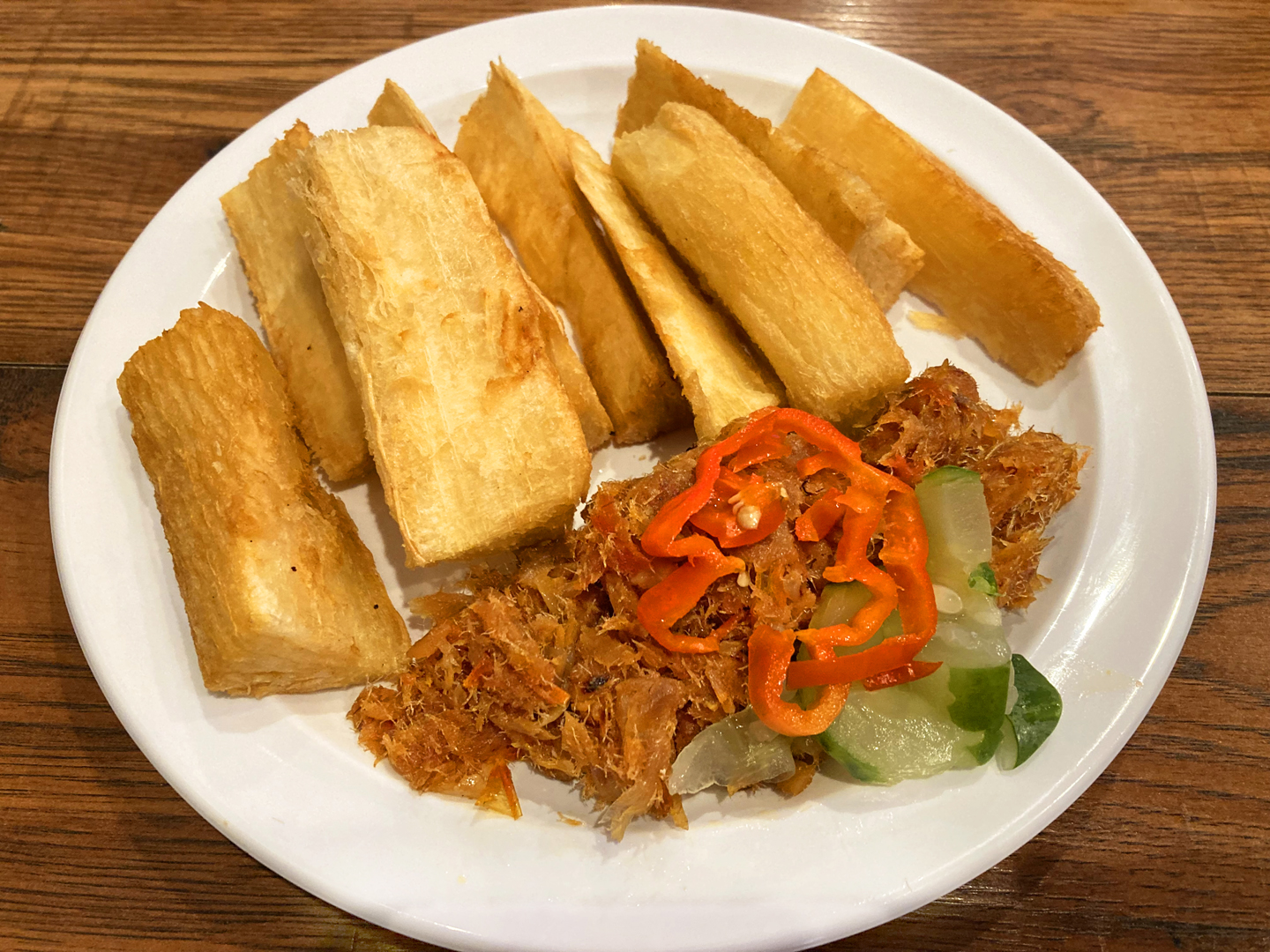
Teloh (fried cassava) and Bakkeljaw (salt cod – think bacalao) – called Teloh met Bakk.
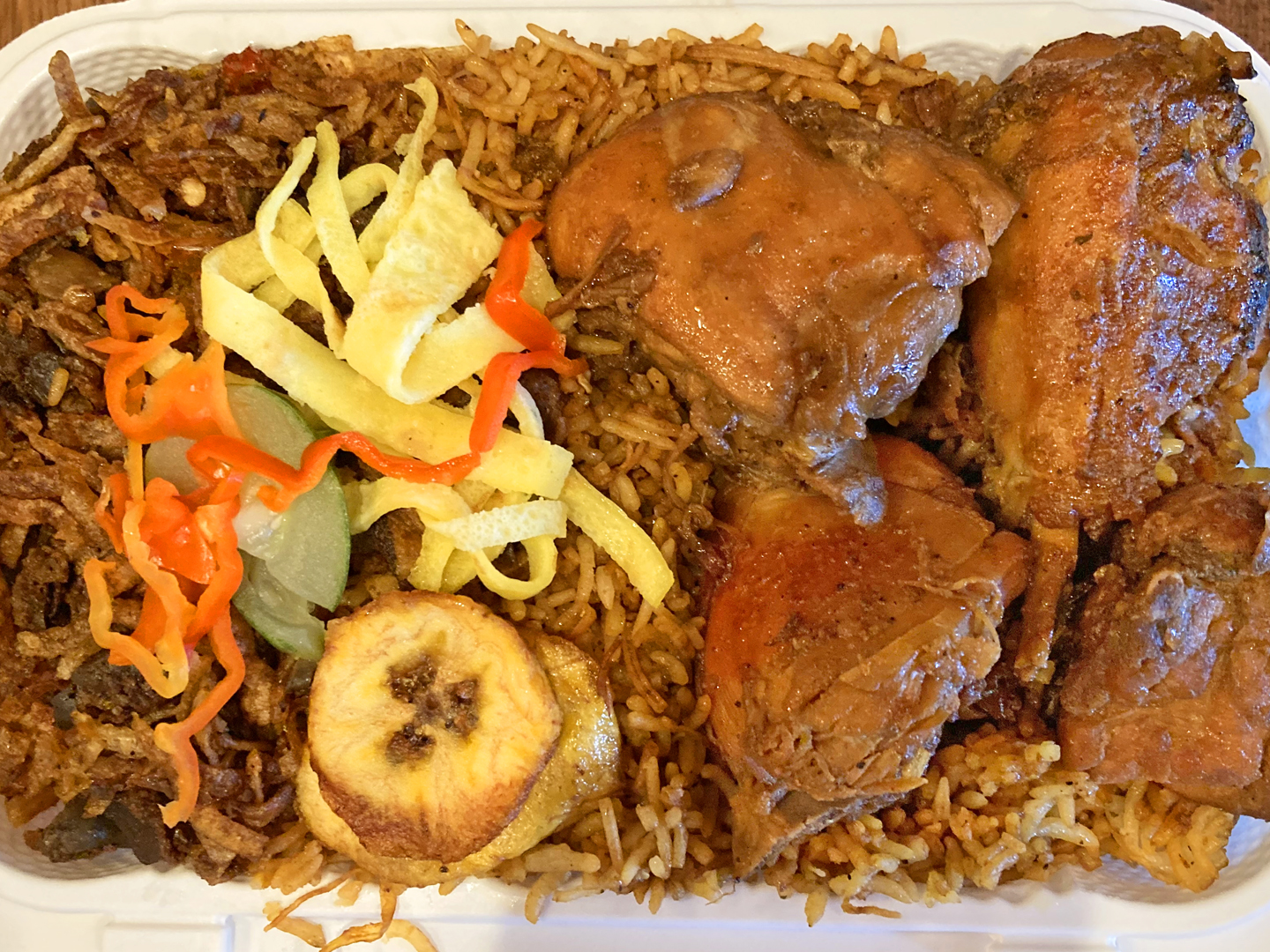
Packed up and ready to travel, from left to right: Bakkeljaw, Indonesian fried rice, Sweet Soy Chicken.
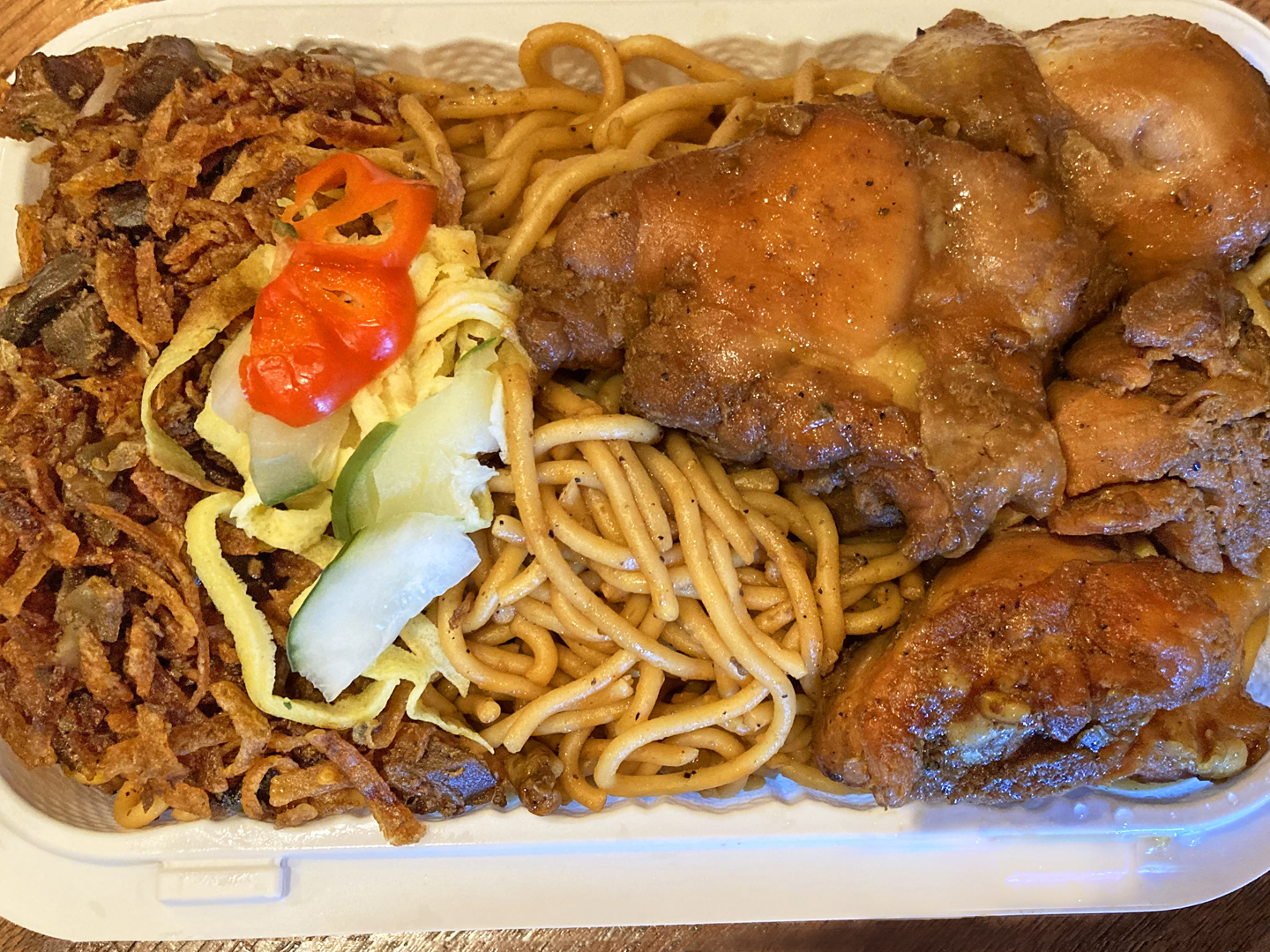
Bakkeljaw, Bami (Indonesian wheat noodles, typically yellow in color), Sweet Soy Chicken.
The only other location I’m aware of in which you can find the real deal is at the Suriname Day festival (Sranan Dey) held annually in Roy Wilkins park in St. Albans, Queens. I’ve seen it celebrated on the first Sunday in July or August, so you may need to do a little sleuthing to determine when this year’s festivities will take place – unless one of you knows for certain: please comment! But if this year is like those in the past, it’s worth the trip!
Stay safe, be well, and eat whatever it takes! ❤

